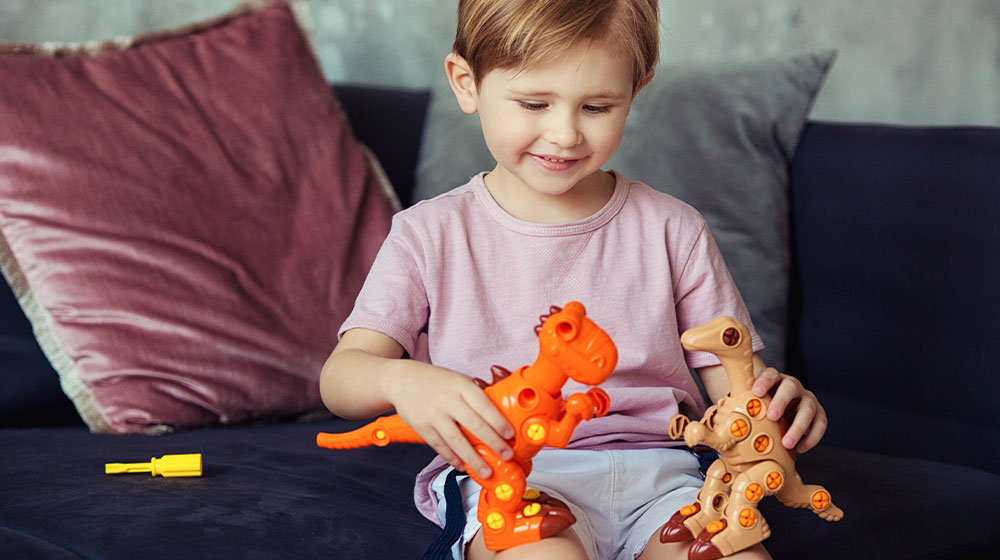Imagine a world where children, especially those who’ve experienced autism due to stroke, can reclaim their lives and unlock their true potential.
This article delves into the revolutionary world of stem cell therapy for autism, a game-changer with remarkable efficacy and a safety profile.
Explore the profound impact of this remarkable advancement and its promise to transform the lives of those affected by autism.
Cure for Autism Found: Stem Cell Therapy Shows Prospects
What is Autism?
Autism, also known as Autism Spectrum Disorder (ASD), is a group of neurodevelopmental disorders that affect how individuals perceive and interact with the world around them. It is characterized by various symptoms and behaviors that can vary from person to person.
People with autism typically exhibit social deficits and communication difficulties and engage in repetitive or stereotypical behaviors. These characteristics collectively place them on a “spectrum,” meaning that the severity and nature of their symptoms can differ widely.
What Are Signs of Autism?
Impaired Communication
One of the hallmark features of autism is impaired social communication and interaction. Individuals with autism may struggle with understanding and responding to social cues, making it challenging to form and maintain meaningful relationships.
Restricted Behaviors

They may also exhibit restricted or repetitive behaviors, such as hand-flapping, repetitive speech, or a rigid adherence to routines or rituals. These behaviors often serve as a coping mechanism for navigating a world that can be overwhelming for those with autism.
Sensitivity Differences
Furthermore, autism can manifest in different ways, affecting not only social and communication skills but also sensory perception, motor skills, and attention.
Some individuals with autism have heightened sensitivities (hyper-sensitive), while others may be hypo-sensitive, meaning they may not respond to sensory stimuli as expected. This diversity in how autism presents itself makes it a highly individualized condition.
How Common is Autism?
Autism is increasingly more common, with an increase in reported cases worldwide.
The estimated prevalence of autism generally falls within 1.5% to 1.8% of the population.
Regarding gender distribution, autism is more commonly diagnosed in males than females, with a prevalence rate of approximately 2.8% in males and 0.65% in females.
This gender discrepancy results in a male-to-female ratio of approximately 4.3 to 1, highlighting the higher likelihood of males being diagnosed with autism.
In The United States, autism is estimated to be around 1-2% of all children.
This figure translates to about 1 to 2 in every 100 children having autism, making it a significant and prevalent neurodevelopmental disorder.
The increasing awareness and diagnosis have contributed to the rising number of diagnosed cases, suggesting that the actual prevalence of autism might be even higher.
What Causes Autism?

The exact causes of autism are still not fully understood, and it is believed to result from a complex interplay of:
- Genetics
- Environmental factors
- Biological factors
Genetics plays a prominent role in the development of autism. Scientists have identified rare genetic mutations or changes strongly associated with autism.
These rare mutations account for a small percentage of cases, and they can be inherited from parents or arise spontaneously. In addition to these rare genetic mutations, common genetic variations may contribute to an individual’s susceptibility to autism.
Environmental and biological factors have also been implicated in the development of autism. Advanced parental age at conception is one such factor, with older parents at a higher risk of having children with autism. Prenatal exposure to environmental factors, including air pollution and pesticides, maternal obesity, and diabetes during pregnancy, have also been linked to an increased risk of autism.
Moreover, research has uncovered various neuropathological features associated with autism. These include:
- Immune system dysfunction
- Cerebellum alterations
- Oxidative stress
- Hypoperfusion (reduced blood flow in specific brain regions)
- Decreased Purkinje cells
- Defective cortical organization
- Altered plasticity of dendritic spine morphology
Still, much remains to be discovered.
Remember that these findings are still subjects of ongoing research and are not universally applicable to all individuals with autism.
Can a Stroke Cause Autism?
Unfortunately, yes. A stroke or a severe brain injury can cause autism.
- Evidence suggests an increased risk of autism following pediatric ischemic stroke, particularly in individuals who also experience comorbid epilepsy.
- Pediatric ischemic stroke occurs when a child’s brain does not receive enough blood supply due to a blocked or narrowed blood vessel, leading to damage to the brain.
- Research has also found that children who experience perinatal stroke, which refers to strokes occurring around birth, have a higher prevalence of autism (11.4%).
The exact mechanism underlying this association is not fully understood, but it appears to be related to neurovascular injuries during the stroke.
Strokes can damage brain regions critical for:
- Social communication
- Learning
- Behavior regulation
This damage may affect the development of the brain and contribute to the development of autism symptoms in some children.
However, remember not all children who experience strokes will develop autism, and the relationship between stroke and autism is complex and multifactorial.
Is There a Treatment for Autism?

Autism is a lifelong condition, and currently, there is no cure for autism yet.
Autism is not an illness that can be eradicated but rather a fundamental aspect of an individual’s neurodevelopment.
Treatment for autism focuses on:
- Improving an individual’s quality of life
- Enhancing social and communication skills
- Helping them adapt to the world’s demands
While there is no one-size-fits-all approach to autism treatment, various strategies can be beneficial. Most importantly, for children with autism, early intervention is critical.
- Behavioral therapies, such as Applied Behavior Analysis (ABA), help children learn essential skills and reduce challenging behaviors.
- Speech and occupational therapy can be valuable in addressing communication and sensory issues.
- Some individuals may also benefit from medication treatment for autism to manage specific symptoms, such as anxiety or aggression. These medications should be prescribed and monitored by qualified healthcare professionals.
Stem Cell Therapy for Autism
In recent years, there has been growing interest in exploring alternative and experimental treatments for autism, including stem cell therapy for autism.
Stem cell therapy for autism is an innovative approach that leverages the regenerative properties of stem cells to potentially induce self-healing in parts of the brain that have developed abnormally. This therapy aims to restore normal brain functioning and development in individuals with autism.
Stem cell therapy for autism could potentially represent hope for individuals and families affected by this neurodevelopmental disorder.
How Does Stem Cell Therapy for Autism Work?

Stem cell therapy for autism can utilize various types of stem cells, but the most commonly used are mesenchymal stem cells (MSCs) and neural stem cells (NSCs).
- MSCs are favored for their safety profile and high efficacy. These cells can differentiate into various cell types and benefit neurodevelopmental disorders.
- NSCs are multipotent stem cells with a more limited ability to differentiate, primarily into neurons and glial cells.
Induced pluripotent stem cells (iPSCs) are another option, capable of differentiating into any cell type after genetic engineering processes are applied to already differentiated cells.
The administration of stem cells can occur through two main routes:
- Intravenous infusion delivers stem cells into the bloodstream. Still, this method may limit the homing effect, as the cells can be trapped in organs like the lungs, heart, liver, or kidneys, or they may get blocked by the blood-brain barrier, reducing their therapeutic impact on autism.
- Intrathecal injection involves directly injecting stem cells into the cerebrospinal fluid surrounding the brain and spinal cord. This method is more effective for administering stem cells to the central nervous system.
The mechanisms of action of stem cell therapy for autism are complex and multifaceted:
- Reduction of Inflammation: Stem cells have immunomodulatory properties that can help regulate the inflammatory processes in the brain, which are believed to contribute to the development of autism.
- Restoration of Neural Connectivity: Stem cells have the potential to promote the formation of new neural connections and repair damaged or disrupted neural pathways, which can lead to improvements in cognitive and behavioral functioning.
- Angiogenesis: The therapy may stimulate the growth of new blood vessels, improving blood flow and oxygen supply to areas of the brain that may have been previously compromised.
- Antioxidant Activity: Stem cells can help reduce oxidative stress in the brain, which is associated with neurodevelopmental disorders, by reducing superoxide production and protecting neural cells from damage.
How Effective is Stem Cell Therapy for Autism?
Research examining the potential of stem cell therapy to alleviate autism symptoms has shown promising results.
Dawson G. et al. (2017)
A study on 25 children with a median age of 4.6 years reported significant behavioral improvements within the first 6 months of stem cell therapy for autism, sustained at the 12-month follow-up.
Nguyen T. L. et al. (2020)
Another study involving thirty children who met the autism criteria, with Childhood Autism Rating Scale (CARS) scores exceeding 37, reported a significant reduction in the severity of autism. The median CARS score decreased from 50 (range 40–55.5) to 46.5, indicating notable improvements in the children’s condition.
Sharma A. et al. (2013)
A separate study assessed stem cell transplantation via the intrathecal route in 32 children with autism. This study observed improved speech and language patterns, social relationships, and brain metabolism.
A total of 29 out of 32 patients (91%) improved on the Indian Scale for Assessment of Autism (ISAA) scores, and 20 patients (62%) showed decreased severity on the Clinical Global Impression Scale (CGI-I scale), with global improvement observed in 96% of patients.
While these results are promising, more extensive research is needed to evaluate further the long-term efficacy of stem cell therapy for autism and to identify the specific subpopulations of individuals who may benefit most from this treatment.
Is Stem Cell Therapy for Autism Safe?
Clinical studies exploring stem cell therapy for autism have reported no severe adverse events. The therapy has encountered only minor adverse events, such as:
- Nausea
- Vomiting
- Localized pain at the injection site
However, the field of stem cell therapy is still evolving, and there is a need for more systematic and rigorous studies to confirm the safety profile of this approach.
How to Prevent Autism Risk After Stroke

Preventing autism risk after a stroke, especially in pediatric cases, is a critical concern. Here are some strategies to minimize autism risk after a stroke:
- Early Detection and Intervention: Prompt recognition of stroke symptoms and timely medical intervention is crucial. Children who experience strokes should receive immediate medical care to minimize brain damage and its potential consequences.
- Rehabilitation: Following a stroke, rehabilitation services should be provided to children to help them regain lost functions and skills. Occupational, physical, and speech therapy are essential to post-stroke care.
- Medication: In some cases, children who have experienced a stroke may be prescribed medications to manage seizures or other neurological symptoms that can occur after a stroke.
- Lifestyle Modifications: Promoting a healthy lifestyle that includes a balanced diet, regular physical activity, and overall well-being can help reduce the risk of stroke.
- Addressing Underlying Risk Factors: Identifying and addressing underlying risk factors for stroke, such as congenital heart defects, blood disorders, or genetic conditions, is essential to prevent recurrent strokes and associated risks.
- Regular Medical Follow-Up: Children who have experienced a stroke should have regular medical follow-up appointments to monitor their progress, identify potential complications, and adjust treatment plans as needed.
References
Sharma A. et al. (2013). Autologous Bone Marrow Mononuclear Cell Therapy for Autism: an Open Label Proof of Concept Study. Stem Cells International.
Dawson G. et al. (2017). Autologous Cord Blood Infusions Are Safe and Feasible in Young Children with Autism Spectrum Disorder: Results of a Single-Center Phase I Open-Label Trial. STEM CELLS Translational Medicine.
Nguyen T. L. et al. (2020). Outcomes of Bone Marrow Mononuclear Cell Transplantation Combined With Interventional Education for Autism Spectrum Disorder. STEM CELLS Translational Medicine.
Paprocka J. et al. (2021). Stem Cell Therapies for Cerebral Palsy and Autism Spectrum Disorder. Brain Sciences.
Qu J. et al. (2022). Efficacy and Safety of Stem Cell Therapy in Children With Autism Spectrum Disorders. Frontiers in Pediatrics.
Sundelin H. et al. (2022). Risk of Autism After Pediatric Ischemic Stroke. Neurology.
Hamner T. et al. (2022). Children With Perinatal Stroke Are at Increased Risk for Autism Spectrum Disorder: Prevalence and Co-occurring Conditions Within a Clinically Followed Sample—the Clinical Neuropsychologist.

